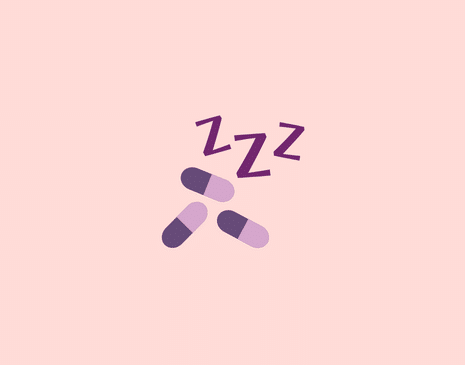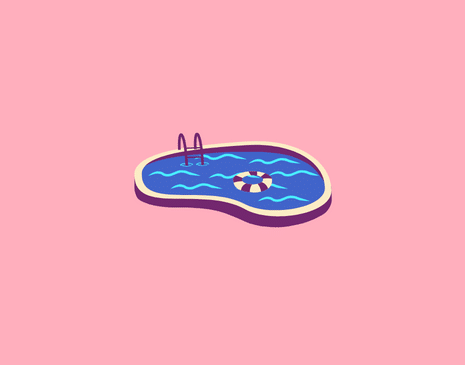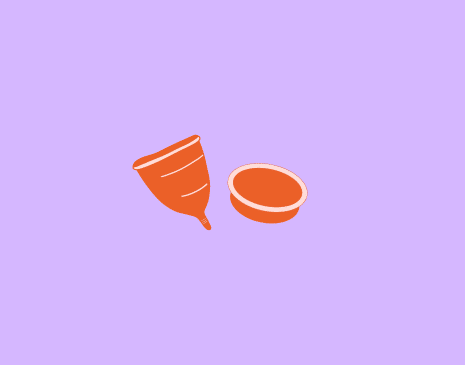We’re 21st Century women living in a world loaded with options when it comes to using eco-friendly period products. If it’s your preference to use a tampon or sanitary pad, they’re both great choices. But if the tampon never served you well; you no longer need to tolerate it. And if lining your knickers with a sanitary pad was never comfortable for you; bid that pad farewell.
The days of limited period product options have ended as we’ve welcomed modernised, eco-friendly, easy-to-use period products like the menstrual cup onto the female sanitary scene. So, let’s get acquainted with the humble menstrual cup, so you can make an informed choice on whether it’s the best option for you.
What is a menstrual cup?
Making its way into the sustainable period movement over the past few years, the menstrual cup is a small cone-shaped cup that’s inserted into the vaginal canal to collect menses during menstruation. Menses: that’s the collective term for blood and other matter shed from the uterus during menstruation each month.
Made from medical-grade, BPA-free silicone, menstrual cups collect menstrual flow for up to 12-hours without disrupting the vagina’s natural flora. Talk about carefree set-and-forget period care. When the time arrives, the menstrual cup can be removed, cleansed, and re-inserted for another round of period protection.
How to use a menstrual cup?
If you’re a first-time user of the menstrual cup, it’s a wise move to make the experience as comfortable as possible by lubricating your menstrual cup with a water-based lubricant. Trust us; a moist menstrual cup will glide in easier, and you’ll avoid any friction-related discomfort. Then, it’s a simple process of inserting, removing, cleaning, and repeating.
How to insert a menstrual cup?
If you’re a seasoned tampon inserter, menstrual cups aren’t much different. Follow these steps to insert your menstrual cup safely and hygienically:
- Step 1: Wash your hands.
- Step 2: Apply water-based lubricant to the rim of your menstrual cup.
- Step 3: Squeeze your menstrual cup in half with the rim facing upwards.
- Step 4: Insert the menstrual cup with the rim facing upwards into your vagina. The cup should sit a few inches below your cervix.
- Step 5: Once the menstrual cup is sitting comfortably inside your vagina, rotate the cup until it unfolds to create an airtight seal (this will prevent leakages). You’ll know your cup is inserted correctly when you can’t notice it’s there, even when you walk, run, sit, or jump.
How to remove a menstrual cup?
Depending on the heaviness of your flow, you can wear a menstrual cup from 6 to 12 hours. Never leave a menstrual cup in for longer than 12 hours, and follow these steps to remove your menstrual cup safely:
- Step 1: Wash your hands.
- Step 2: Using your index finger and thumb, reach into your vagina to pull the stem of the menstrual cup gently until the base is within reach.
- Step 3: Pinch the base to release the seal.
- Step 4: Completely remove the menstrual cup from your vagina (be careful to avoid spillage).
- Step 5: Once removed, empty the contents of your menstrual cup into the sink or toilet.
- Step 6: Clean your menstrual cup.
How to clean a menstrual cup?
When cleaned, sterilised, and stored correctly, menstrual cups have a lifespan of 1 to 5 years. Proper cleaning removes bacteria and build-up, prevents stains, and eliminates odour. Clean your menstrual cup daily by following these steps:
- Step 1: Upon removal, empty the contents of your menstrual cup in the sink or toilet.
- Step 2: Using a mild, fragrance-free soap, rinse your menstrual cup with water. If you’re in a public restroom, use paper towel, toilet paper, or wet wipes to clean your menstrual cup instead of the public sink.
- Step 3: Once cleaned, your menstrual cup is ready to be reinserted.
How to sterilise a menstrual cup?
At the end of each period, it’s important to sterilise your menstrual cup in preparation for your next cycle. Sterilisation will remove existing bacteria and prevent bacterial growth. Sterilise your menstrual cup by following these steps:
- Step 1: Rinse your menstrual cup with a mild, fragrance-free soap.
- Step 2: Boil your menstrual cup for a few minutes.
- Step 3: After the menstrual cup has boiled, use tongs to remove from the water and set aside on paper towel to cool and dry off.
- Step 4: Store your menstrual cup for your next period.
How to store a menstrual cup when not in use?
To protect your menstrual cup from germs, return it to the bag, pouch or container that was provided when you initially purchased your menstrual cup. If you didn’t receive a covering, or you lost yours, you can use any form of breathable pouch for storage. Then, store the pouch in a cool, dry location, like a bathroom drawer.
What are the pros and cons of using a menstrual cup?
The pros of using a menstrual cup:
- They’re one of the best eco-friendly methods to manage your period due to their recyclable nature
- Lasting 1-5 years, menstrual cups are a super affordable way to manage your period
- You can avoid paying The Pink Tax on period products
The cons of using a menstrual cup:
- Risk of infection if not cleaned correctly or removed within 12-hours
- Risk of irritation, particularly when lubricant isn’t used prior to use
- Toxic shock syndrome, a rare but potentially fatal infection caused by bacterial toxins
How to choose the right menstrual cup for you?
For starters, have a chat with your doctor if you have any outstanding questions about whether the menstrual cup is the right period control method for you. Together, you’ll consider the right menstrual cup based on your age, cervix length, heaviness of flow, flexibility of the cup, cup capacity, cup shape, cup size, strength of your pelvic floor, and history of childbirth.
Generally, smaller sized menstrual cups will be recommended for younger women who haven’t experienced a vaginal childbirth. Larger sized menstrual cups are suitable for women over the age of 30 who have heavier periods or have experienced a vaginal childbirth.







